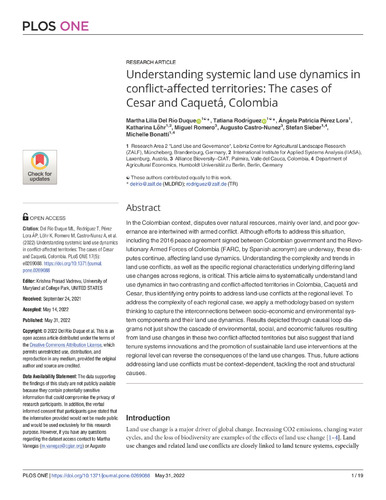Understanding systemic land use dynamics in conflict-affected territories: The cases of Cesar and Caquetá, Colombia
In the Colombian context, disputes over natural resources, mainly over land, and poor governance are intertwined with armed conflict. Although efforts to address this situation, including the 2016 peace agreement signed between Colombian government and the Revolutionary Armed Forces of Colombia (FARC, by Spanish acronym) are underway, these disputes continue, affecting land use dynamics. Understanding the complexity and trends in land use conflicts, as well as the specific regional characteristics underlying differing land use changes across regions, is critical. This article aims to systematically understand land use dynamics in two contrasting and conflict-affected territories in Colombia, Caquetá and Cesar, thus identifying entry points to address land-use conflicts at the regional level. To address the complexity of each regional case, we apply a methodology based on system thinking to capture the interconnections between socio-economic and environmental system components and their land use dynamics. Results depicted through causal loop diagrams not just show the cascade of environmental, social, and economic failures resulting from land use changes in these two conflict-affected territories but also suggest that land tenure systems innovations and the promotion of sustainable land use interventions at the regional level can reverse the consequences of the land use changes. Thus, future actions addressing land use conflicts must be context-dependent, tackling the root and structural causes.

